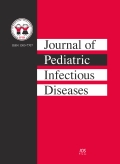Authors: Tebruegge, Marc | Pantazidou, Anastasia | Yau, Carmen | Chisti, Mohammod
Jobayer | Curtis, Nigel
Article Type:
Research Article
Abstract:
Bacterial tracheitis is a rare, but potentially life-threatening infection, which predominately affects children. The existing literature on this condition is relatively limited. Objective: To provide a comprehensive review of the published literature on bacterial tracheitis by systematically summarizing epidemiological, radiological, clinical and microbiological aspects of the disease combined with a discussion of potential mechanisms involved in the pathogenesis and recommendations for the management of suspected cases. Methods: Search of multiple databases including
…Medline/PubMed, the Web of Science, EMBASE, the Cochrane database, Scopus and CINAHL. All original reports in English with four or more cases of bacterial tracheitis were included, with the exception of one paper, which provided insufficient detail. All relevant publications were searched for further references. Results: Nineteen publications were identified, which included a combined total of 300 patients. The male-to-female ratio was 1.3:1. The majority (72%) of patients required intubation or tracheostomy. While short-term complications including hypotension, pulmonary edema and pneumothorax were not uncommon, long-term sequelae were rare. Fatality rates varied considerably between reports (range 0–40%). The most common reported causative organisms were Staphylococcus aureus (41%), Haemophilus influenzae (18%), Streptococcus pneumoniae (15%), Moraxella catarrhalis (13%) and Streptococcus pyogenes (9%). Other bacterial organisms were relatively uncommon (< 3%). Conclusions: Bacterial tracheitis remains a potentially fatal infection. However, in contrast to the high mortality rates documented in some of the earlier publications, fatal outcomes in recent reports were overall relatively rare. Active management, including timely intubation, is vital to prevent complete upper airway obstruction and consequent respiratory arrest. Based on the data presented, initial antibiotic therapy should consist of broad-spectrum coverage, including an appropriate anti-staphylococcal agent, with a view to optimizing antibiotic therapy once culture and susceptibility results become available.
Show more
Keywords: Bacterial tracheitis, laryngotracheobronchitis, infectious upper airway obstruction, child, pediatric
DOI: 10.3233/JPI-2009-0179
Citation: Journal of Pediatric Infectious Diseases,
vol. 4, no. 3, pp. 199-209, 2009
Price: EUR 27.50





